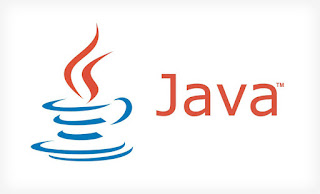interview question of oops concept
Oops based question and answer for interview:
1.What is oops?
Ans.OBJECT
ORIENTED PROGRAMMING (OOP) is a programming concept that works on the
principles
of abstraction, encapsulation, inheritance, and polymorphism.
2.Why oops?
Ans.Because
it make visualization easier because it is closest to real world scenarios.
You
can reuse the code, this saves time, and shrinks your project.
OOP
provides a clear modular structure for programs.
3.What are class and objects?
Ans.Class
is a logical entity it contains logics whereas object is physical entity it is
representing memory.
Class
is blue print it decides object creation without class we are unable to create
object.
4.Why we use class?
Ans. For code reusibility
for increase security of code
5.Why we create object?
Ans.for
implementation of class in real world
6.Why we use Encapsulation?
Ans.It’s
because encapsulation has a number of advantages that increase the reusability,
flexibility and maintainability of the code.
Flexibility:
It’s
more flexible and easy to change the encapsulated code with new requirements.
For example, if the requirement for setting the age of a
person
changes, we can easily update the logic in the setter method setAge().
Reusability:
Encapsulated code can be reused throughout the application or across multiple
applications. For example, the Person class can be reused whenever such type of
object is required.
Maintainability:
Application ode is encapsulated in separate units (classes, interfaces,
methods, setters, getters, etc) so it’s easy to change or update a part of the
application without affecting other
parts, which reduces the time of maintenance
7.Why we use inheritance ?
ü Inheritance
is for reusing code. When you want to extend features of a class, you can write
a subclass to inherit all data and behaviors of that superclass. This saves
time on writing code.
ü Another
reason for implementing inheritance is for the purpose of extensibility. It’s
easier to extend a class and add new features than writing a new class from
scratch.
8.Define the term constructor?
ü Constructors
are used to write block of java code that code will be executed during object
creation.
ü Constructors
are used to initialize instance variables during object creation.
9.Why we use super keyword?
Ans.
super”
keyword is used to represent super class object.
1.
Super class variables.
2.
Super class methods.
3.
Super class constructors.
4.
Super class instance blocks.
5.
Super class static blocks.
10.What are the main building blocks of
oops?
Ans.
1.
Inheritance
2.
Polymorphism
3.
Abstraction
4.
Encapsulation….etc
11.How to achieve inheritance concept
and inheritance is also known as.
Ans.
Inheritance concept achieve by using extend keyword. it is also known as Is-A
relationship.
12. One class able to extends how many
classes at a time?
Ans.
Only one
13.What is the purpose of extends
keyword?
Ans.The
purpose of Extends keyword is providing relationship between two classes.
14.What is inheritance?
Ans.
1.The
process of acquiring properties (variables) & methods (behaviors) from one
class to another class is called inheritance.
2.
We are achieving inheritance concept by using extends keyword.
3.Inheritance
is also known as is-a relationship.
15.What is Association?
Ans.Association
is relation between two separate classes
which establishes through their Objects.
Composition
and Aggregation are the two forms of association.
16.What is Aggregation?
Ans.It
is Weak form of Association. It also known as Has-A relationship.
When
there is a composition between two entities, the composed object can exist
without the other entity.
Example.
Relationship
between teacher and department
17.What is composition?
Ans.
Composition
is a restricted form of Aggregation in which two entities are highly dependent
on each other.
It
represents part-of relationship.
In
composition, both the entities are dependent on each other.
When
there is a composition between two entities, the composed object cannot exist
without the other entity.
Example.
relatioship between student and marks
Ans.
ü The
ability to appear in more forms is called polymorphism.
ü One
thing can exhibits more than one form is called polymorphism.
ü One
functionality with different actions is called polymorphisum.
ü One
person with different behaviours is called polymorphism
ü Polymorphism
is a Greek word poly means many and morphism means forms.
There
are two types of polymorphism in java,
1)
Compile time polymorphism / static binding / early binding
Example
:- method overloading.
2)
Runtime polymorphism /dynamic binding /late binding.
Example
:- method overriding.
Ans.The
process of binding the data and code as a single unit is called encapsulation.
Or
The process of hiding the implementation
details to user is called encapsulation
we are achieving this concept by declaring
variables as a private modifier because
it is possible to access private members with in the class only.
Note:
The data of the private field can be
accessed
only by using public setter & getter method
20.What is Abstraction?
Ans.The
process highlighting the set of services and hiding the internal implementation is called abstraction.
Bank
ATM Screens Hiding the internal implementation and
highlighting
set of services like , money transfer, mobile registration,…etc).
We
are achieving abstraction concept by using Abstract classes & Interfaces.
21.How can you acheive 100% abstraction?
Ans.By
using interface
22.How can you prevent object creation?
Ans.
By using Abstract class
23.How we preventing inheritance?
Ans.
For preventing inheritance we have to prevent subclass or child class creation
. we have to declare our class as final with help of final modifier that
restrict to create subclass.
24.We know very well java doesn't
support multilple inheritance so how can
we achieve?
Ans.
By using interface
25.Does method overloading depends on
return type of method?
Ans.
NO . it's depend only signature of method. Method signature means method_name and argument.
26.Can we hold Parent class object into
child class reference?
Ans.
No







Post a Comment